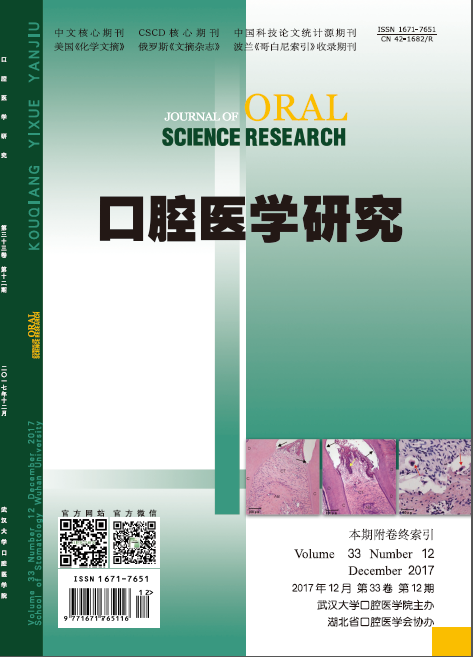|
|
Effect of MAP4K3-mTOR Signaling in Licochalcone A-induced Autophagy and Apoptosis of Human Oral Squamous Cell Carcinoma Cells.
ZENG Guang,WEI Ke-wen.
2017, 33(12):
1241-1245.
DOI: 10.13701/j.cnki.kqyxyj.2017.12.001
Objective: To investigate the effect of MAP4K3-mTOR signaling in licochalcone A-induced autophagy and apoptosis of human oral squamous cell carcinoma cells (OSCC). Methods: OSCC SCC-25 cells were adopted and treated once with licochalcone A for 0, 6, and 24 h at 0, 25 and 50 μM. The cells were harvested for further investigation. Western blot analysis was adopted to detect the protein expression of MAP4K3, AKT, mTOR, and autophagy marker molecules LC3-II and beclin1, and apoptosis marker molecules caspase-3, caspase-9, and bcl-2. Annexin V-PI staining was used to detect the cell apoptosis. Results: Exposure of SCC-25 cells to licochalcone A dose- and time- dependently decreased the protein expression of MAP4K3, p-mTOR, and p-p70S6, and increased the protein expression of LC3-II, beclin1, caspase-3, and caspase-9. When the MAP4K3 was overexpressed, the protein expressions of p-mTOR, caspase-3, and caspase-9 were increased, while the expressions of LC3-II, beclin1, and bcl-2 were decreased (P<0.05). In addition, licochalcone A stimulation increased the number of early and late apoptotic SCC-25cells, which could be obviously reversed by MAP4K3 overexpression (P<0.05). Conclusion: Licochalcone A dose- and time- dependently decreased MAP4K3-mTOR signaling, but increased the autophagy and apoptosis of SCC-25 cells. When MAP4K3 was overexpressed, the licochalcone A-induced autophagy decreased, but licochalcone A-induced apoptosis increased.
References |
Related Articles |
Metrics
|

